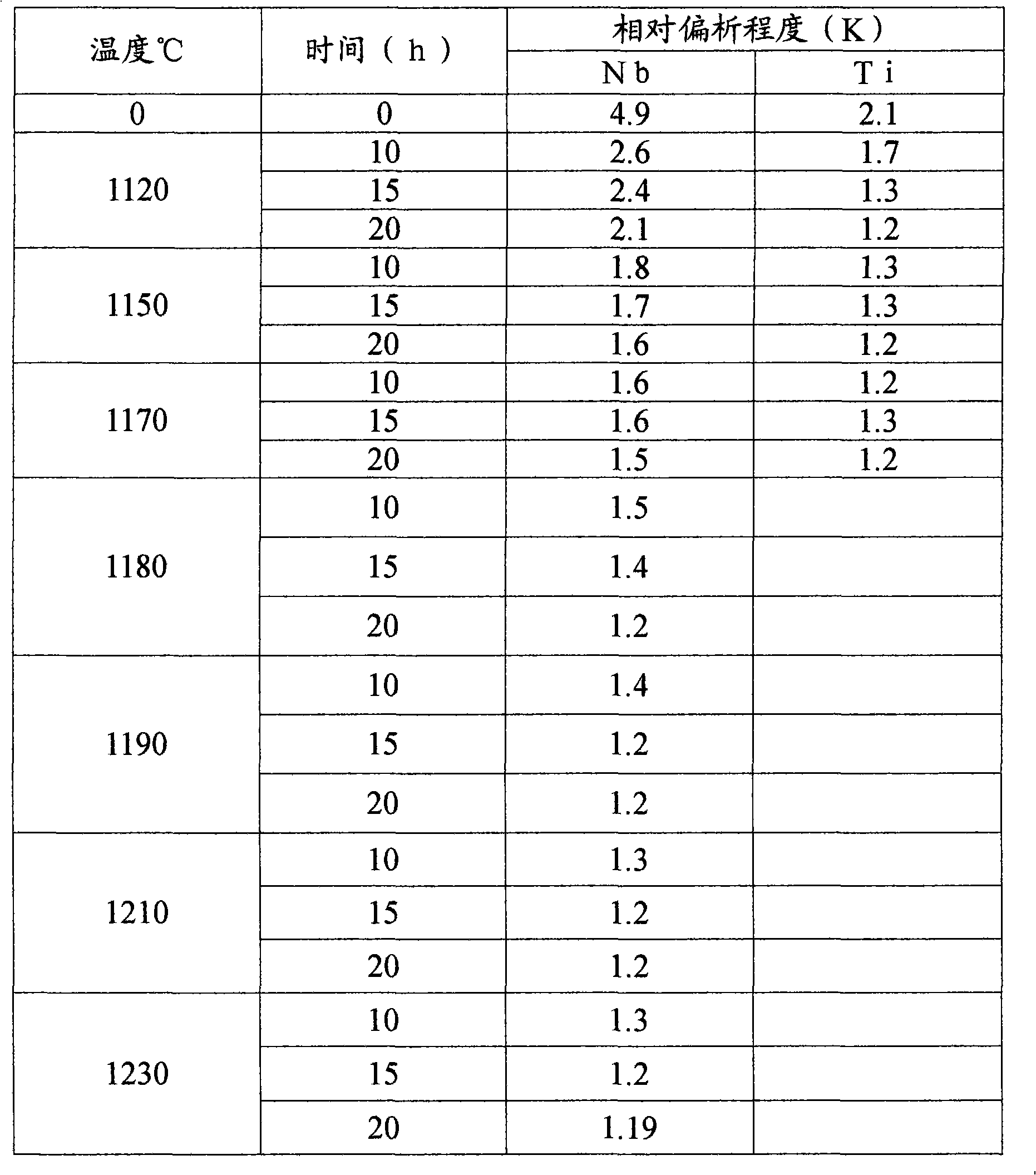Homogenization treatment process for high-temperature alloyed steel ingot
A homogenization treatment, high-temperature alloy steel technology, applied in the direction of heat treatment equipment, heat treatment process control, manufacturing tools, etc., to achieve the effect of improving the degree of segregation
Inactive Publication Date: 2008-11-26
JIANGSU TOLAND ALLOY
View PDF0 Cites 11 Cited by
- Summary
- Abstract
- Description
- Claims
- Application Information
AI Technical Summary
Problems solved by technology
Although the Laves phase is eliminated, there are quite serious grain bands between coarse and fine grains, and the δ phase is densely distributed in the fine grain bands
Method used
the structure of the environmentally friendly knitted fabric provided by the present invention; figure 2 Flow chart of the yarn wrapping machine for environmentally friendly knitted fabrics and storage devices; image 3 Is the parameter map of the yarn covering machine
View moreImage
Smart Image Click on the blue labels to locate them in the text.
Smart ImageViewing Examples
Examples
Experimental program
Comparison scheme
Effect test
Embodiment 1
the structure of the environmentally friendly knitted fabric provided by the present invention; figure 2 Flow chart of the yarn wrapping machine for environmentally friendly knitted fabrics and storage devices; image 3 Is the parameter map of the yarn covering machine
Login to View More PUM
 Login to View More
Login to View More Abstract
A homogenizing treatment method for high-temperature alloy ingots is annealing treatment in an annealing furnace. The method is characterized in that the temperature of the annealing treatment is between the temperature of 1180 to 1230 DEG C and the annealing lasts for twenty hours. The method of the invention adopts the technical proposal, so the method can effectively solve the problem of segregation between the phase Laves and the phase delta and improves the alloy segregation degree to the utmost extent.
Description
technical field The invention relates to a high-temperature alloy processing technology, in particular to a method for homogenizing high-temperature alloy steel ingots. Background technique GH169 superalloy is an iron-nickel-based alloy containing up to 5% niobium. Due to its composition characteristics, it determines the serious segregation of the alloy elements, especially the segregation of Nb, and the limitation of cooling speed, resulting in the ingot after cooling. Laves phase and δ phase must be formed in the as-cast structure, and the existence of Laves phase in the alloy leads to the low plasticity of the ingot. Domestic research on this has achieved certain results. For example, for the Φ360 ingot type, the Laves phase can be basically eliminated by uniform treatment at 1120°C for 24 hours or 1150°C for 15 hours. Although the Laves phase is eliminated, there are quite serious grain bands between coarse and fine grains, and the δ phase is densely distributed in the...
Claims
the structure of the environmentally friendly knitted fabric provided by the present invention; figure 2 Flow chart of the yarn wrapping machine for environmentally friendly knitted fabrics and storage devices; image 3 Is the parameter map of the yarn covering machine
Login to View More Application Information
Patent Timeline
 Login to View More
Login to View More Patent Type & Authority Applications(China)
IPC IPC(8): C21D1/26C21D11/00
Inventor 万金宜张建国万中度
Owner JIANGSU TOLAND ALLOY
Features
- R&D
- Intellectual Property
- Life Sciences
- Materials
- Tech Scout
Why Patsnap Eureka
- Unparalleled Data Quality
- Higher Quality Content
- 60% Fewer Hallucinations
Social media
Patsnap Eureka Blog
Learn More Browse by: Latest US Patents, China's latest patents, Technical Efficacy Thesaurus, Application Domain, Technology Topic, Popular Technical Reports.
© 2025 PatSnap. All rights reserved.Legal|Privacy policy|Modern Slavery Act Transparency Statement|Sitemap|About US| Contact US: help@patsnap.com

